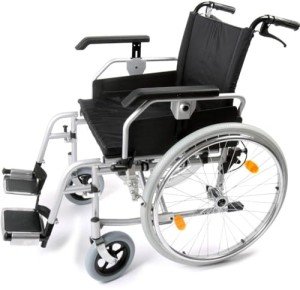Bariatric Transit 24 Inch Wheelchair
A bariatric wheelchair is ideal if you need a chair with a larger seat width and higher weight capacity. This long lasting wheelchair has a nylon padded seat that extends 24 inches wide with swing-away footrests. It has considerable 4 caster mobility and attendant locks for safe stops. The durable slide tube frame can support up to 450 pounds.
Weight Capacity
When selecting a wheelchair for yourself or for a loved one, it is very important to consider the weight capacity. Basic wheelchairs can accommodate up to 250 pounds, however bariatric chairs have the ability to support as much as 700 pounds. This distinction in capacity is the main reason that bariatric wheelchairs are sturdier and much heavier than basic designs.
To assist drivers securely transport guests who utilize bariatric wheelchairs, it is important to have actually automobiles geared up with suitable equipment. This consists of wheelchair lifts and ramps that can handle the increased size and weight of the chair. In addition, motorists should receive training on how to steer these big mobility aids.
The Medline folding additional large bariatric transport wheelchair has a roomy 24" seat and a carbon steel frame with rust- and chip-resistant chrome plating. It also includes easy-to-clean vinyl upholstery and swing-away footrests with a push-button adjustable height function. This heavy-duty wheelchair has a weight capacity of 500 pounds.
When choosing a wheelchair, it is essential to ask for advice from a doctor or mobility expert. They can evaluate your physical condition and suggest the very best mobility service for you. They can likewise assist you determine if Medicare or private insurance covers the cost of your wheelchair.
Wheelchair Frame
A wheelchair frame is the main support group that holds the other parts of the chair. self propelled bariatric wheelchair are made from a variety of materials, including aluminum, titanium, and carbon fiber. Rigid manual wheelchairs are designed with performance in mind and use the concepts of sports bicycle frames-- triangles are among the greatest shapes offered and engineers have used this understanding to create frames that create a rigid system that utilizes less energy for propulsion than more versatile frames.
The option of wheelchair frame is frequently based on the needs and top priorities of the client as evaluated by their OT/PT or other clinician. For example, a front frame angle is an essential setup as it impacts how well the client can transfer or self-catheterize. Similarly the seat to footplate height is a crucial factor for placing and balance.
Most wheelchairs have the option to be set up with a repaired or reclining frame. For those who need a more steady chair for stability or for transport in cars, a repaired frame is best. This is particularly true for those who require a bariatric chair with a wider seat width or higher weight capacity.

Folding frames have a conventional "cross-brace" or X design that enables the chair to fold by bringing the side rails together, although there are other styles readily available for folding chairs, such as a scissor brace frame (Kuschall Champion) which reduces the number of moving parts and for that reason can be lighter than the cross-brace designs. Other options for folding frames consist of swing-away legrests and removable arms.
Many producers likewise provide a variety of choices for the wheelchair frame front end, such as the frame angle. A 90 degree frame angle positions the feet at a natural position for pressing, while a 75 degree frame angle places the feet more forward. The choice of frame angle must be thoroughly thought about as the more forward position may make it hard for the wheelchair user to get over challenges or might trigger a wheel capturing on dropped curbs and creating vibration.
Rigid frames are usually made from aluminium, although some models have a dual tube construction that is similar to the sport frames utilized in cycling, to help increase strength and stability. Carbon Fibre is another material used in the frame construction of some wheelchairs, using an even stiffer and lighter frame.
